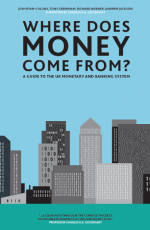The Technical Details (Advanced)

This section covers all the nitty-gritty details of money creation by banks. We don’t assume any prior knowledge, but some bits might still be hard going if it’s your first time looking at this, so you may prefer our Banking 101 video course to start with.
The key to understanding what money is and how it is created is to forget everything you think you know about money and start again. The problem is that we have preconceived ideas of banks and money that come from our own viewpoint as customers of banks. As children we thought that money was just cash and were taught that a bank (or a piggy bank) is a place to put money to keep it safe. From inside a bank, it all looks quite different!
The vast majority of money is not cash, and
Banks are not places where you put your money to keep it safe.
In fact the ‘money’ in bank accounts is just an accounting entry, and banks manage the accounts, meaning that they have the ability to create and destroy money as they make loans and take loan repayments. (The principle is the same for central banks as well as private ones).
Learn More
In Summary:
The key points from this section are:
The ‘money’ in your bank account does not represent physical cash that you can hold in your hand; it is simply an accounting liability from the bank to you, and only exists as a number in a computer system.
We now use these bank liabilities / accounting entries to make payments for over 99% of all transactions (by value). Therefore we could describe bank liabilities, bank credit and bank deposits (which are all the same thing) as being equivalent to money in the modern day.
Banks create bank deposits (the money in your account) when they make loans. They add liabilities to the borrower’s account, and simultaneously add an asset (the loan contract) to their balance sheet.
The repayable principal of the loan is recorded as an asset. However, the interest payable isn’t recorded as an asset on the balance sheet, but is just recorded as income as and when the interest is paid.
The money that banks use to pay each other – central bank reserves – is itself created out of nothing as an accounting entry by the Bank of England.
In summary, what we use as ‘money’ – the numbers in our bank accounts – are simply accounting entries made by banks. These accounting entries make up over 97% of all the money that we use today.
For more details see:

Where Does Money Come From?
A guide to the UK Monetary and Banking System
Written By: Josh Ryan-Collins, Tony Greenham, Richard Werner & Andrew Jackson